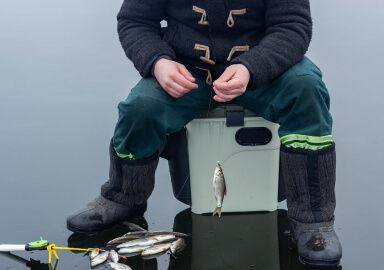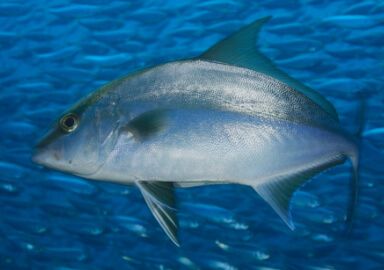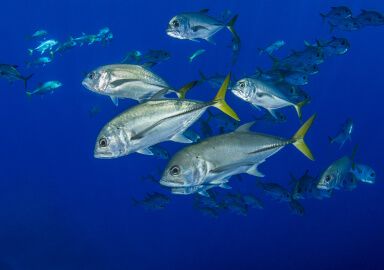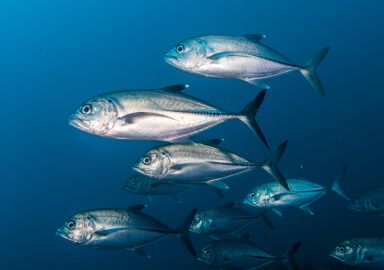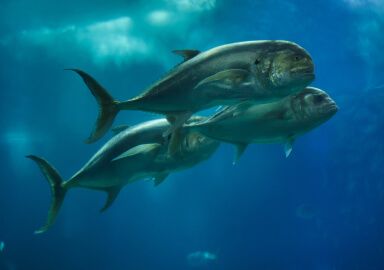African Pompano Jack
African pompano is a widespread top predator, found around reefs and wrecks in warm water, and, due to its size and fighting abilities, a prime sport angling species.
View 8 listings
8
listings
–
price starting from
3
countries
–
to the nearest trip
Where and When?
African pompano have a circum-global distribution in tropical oceans. They are found in the warmer water areas of both the eastern and western seaboards of the Americas, the continent of Africa and many Pacific and Indian Ocean islands, such as the Seychelles and Hawaii. They are also caught in more temperate areas along the western Australian shore. They are generally a coastal species and can be found commonly in the depth range 9.1-30.5 m. (30-100 ft.). In deeper waters they favour being fairly far down in the water column, particularly around reefs, wrecks and similar structures. They do come close inshore, particularly during warm periods, and can also occasionally approach the surface around reefs. As with many warmwater predators, there is a general seasonal movement to cooler water areas in the summer months and then the reverse in winter. This means that in some areas summer is the best time to find them, while in others they can be caught year-round. African pompano are usually caught in daylight but may be caught throughout the day, especially in deeper waters.
About African Pompano Jack
The African pompano, or threadfin trevally (Alectis ciliaris), although not a true “pompano”, are members of the Carangidae family and among the top predators where they occur. They are deep fish, laterally compressed with a concave head area. They are a dark, metallic blue/green above and in front, changing to a light, silvery belly. They have very small scales embedded in the skin and large mouths with many small, sharp teeth. Their eyes are fairly large and they can attain 1.3 m. (51 in.) and a mass of over 22 kg. (48.5 lbs.), but those caught are usually in the 65-80 cm. (25.6-31.5 in.) range. The larvae and juveniles drift in tropical ocean currents and have long trailing “thread” extensions on their dorsal and anal fins. Juveniles eat plankton and progress to larger planktonic organisms such as copepods and fish larvae, while the adults feed mostly on fish, but will also take crustaceans including squid and octopus. Adults are often found in shoals or loose groupings and, while they undergo migrations, these are mostly local and specific to areas.
How to Catch?
As fairly-large top predators of relatively deep-water, African pompano are usually caught from small or rcharter boats, but a wide variety of lures, baits, and fishing techniques can be employed. The species likes structure and can form aggregations around wrecks and reefs and, while they like cover, they also patrol around it and go for forays in search of shoals of baitfish. The most popular method for catching African pompano is probably jigging over wrecks using fairly large, bright, artificial lures. Natural baits, fish or squid, also work and live bait, using locally caught fish, can produce good results. In some areas where the pompano come near the surface around baitfish shoals, or where they can be brought to the upper layers by chumming, fly fishing can be successful. Worldwide, fishing is little regulated but in some places, such as Florida, only two fish of over 24 inches may be kept. African pompano are regarded as very strong and hard fighting fish and are well-known for heading strongly, and sometimes inexorably, for cover when hooked. The capture of a good specimen is usually a great achievement and the result of significant preparation, good equipment and guidance plus a degree of luck!




